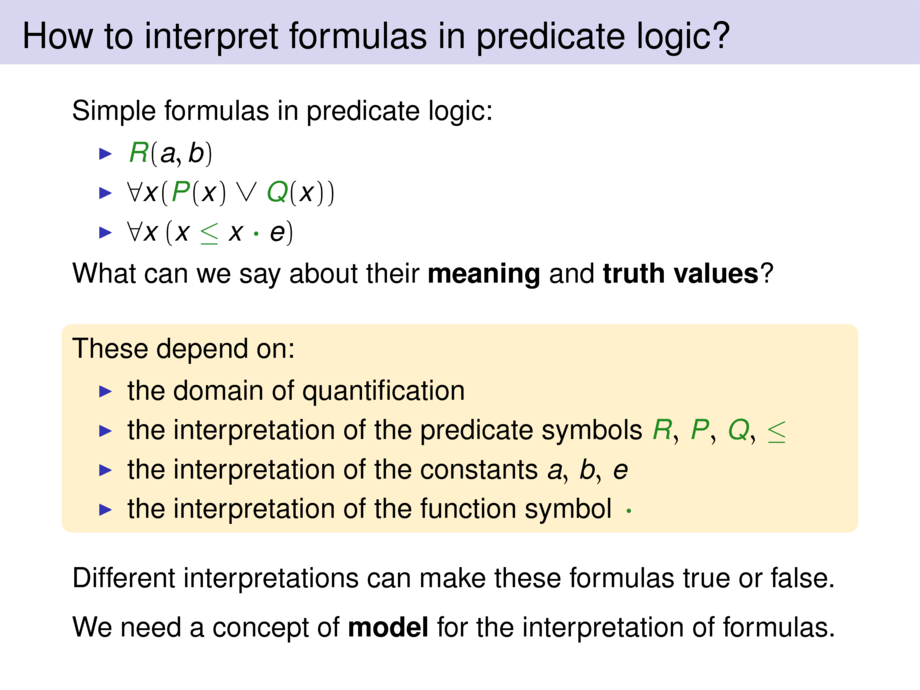



































































































40/270
\begin{frame}[t]
\frametitle{How to interpret formulas in predicate logic?}
Simple formulas in predicate logic:
\begin{itemize}
\item $\formula{\binpred{R}{\const{a}}{\const{b}}}$
\item $\formula{\forallst{x}{(\logor{\unpred{P}{x}}{\unpred{Q}{x}})}}$
\item $\formula{\forallst{x}{\, (x \mathrel{\sbinpred{\le}} {x \mathrel{\sfunc{\boldsymbol{\cdot}}} \const{e}}) }}$
\end{itemize}
What can we say about their \emph{meaning} and \emph{truth values}?\pause{}
\medskip
\begin{goal}{}
These depend on:
\begin{itemize}
\item
the domain of quantification
\pause
\item
the interpretation of the predicate symbols $\sbinpred{R},\, \sunpred{P},\, \sunpred{Q},\, \sbinpred{\le}$
\pause
\item
the interpretation of the constants $\const{a},\,\const{b},\,\const{e}$
\pause
\item
the interpretation of the function symbol $\,\sfunc{\boldsymbol{\cdot}}\,$
\end{itemize}
\end{goal}
\pause\medskip
Different interpretations can make these formulas true or false.
\pause\medskip
We need a concept of \emph{model} for the interpretation of formulas.
\end{frame}

